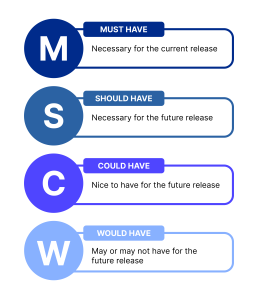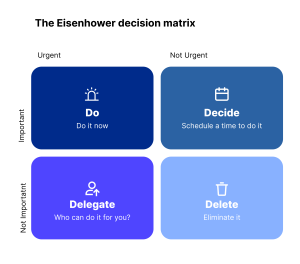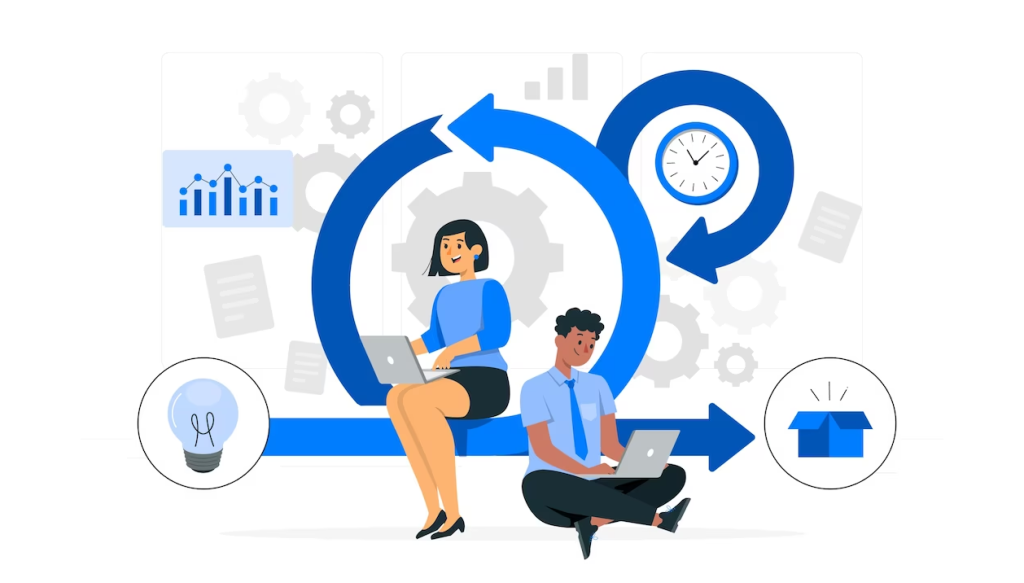Studies reveal that 90% of startups fail and 10% of startups fail within the first year. Moreover, 42% of them fail due to lack of market demand. Most of the failures could have been averted in the initial phases through the creation of a Minimum Viable Product (MVP) using Agile software development practices.
If you’re planning to turn your idea into reality and wondering about how MVP software development and Agile methodology fit each other to build a successful product, continue reading to find out.
But let’s first have a basic understanding of MVP and agile software development.
What is an MVP?
MVP stands for “Minimum Viable Product.” It is a development technique where a product is released with just enough features to satisfy the early users and collect feedback.
The aim is to quickly validate the core idea of a product, learn from user interactions and iteratively enhance the product based on user feedback.
By focusing on the minimum set of features, MVP software development can be developed more quickly and cheaply than a full-fledged product. This can help you reduce the risk of investing significant resources and time in a product that may not resonate with users.
What is Agile Software Development?
Agile is an iterative and incremental software development methodology that prioritizes flexibility, collaboration and customer satisfaction. Essentially, it focuses on swift delivery of high-quality software by responding quickly to evolving requirements and delivering small, functional increments of a product in short development cycles.
The key principles of Agile software development methodology include:
- Iterative development: The product is developed in short, iterative cycles, with each cycle delivering a working product that can be tested and evaluated.
- Customer involvement: Customers are actively engaged throughout the development process, providing feedback and influencing product decisions.
- Adaptive planning: The product plan is highly flexible and adaptable, allowing for changes as new feedback is gathered.
- Continuous testing: Testing is integrated throughout the development process, ensuring that the product is of high quality and meets customer requirements.
- Continuous improvement: The team continuously reflects on their development processes and practices, identifying areas for enhancement and adapting accordingly.
The Role of MVP in Agile Software Development
Now, you have a basic understanding of MVP and agile software development. It’s time to understand what is MVP in an agile development framework. This involves exploring the specific role that MVP plays in the context of agile software development.
In Agile software development, MVP plays a crucial role because it aligns perfectly with Agile principles of adaptability, rapid iteration and continuous improvement.
Below’s how an MVP fits into the Agile development methodology:
1. User-Centric Focus
Agile prioritizes delivering value to users. An MVP fits perfectly into this by focusing on the development of a product with the minimum features necessary to address the core needs of early adopters.
2. Iterative Development Cycles
Agile promotes iterative development. An MVP is built to be released quickly, delivering a tangible product that can be iteratively improved upon in subsequent development cycles.
3. Continuous User Feedback
Agile also promotes continuous user feedback. An MVP gathers insights from real-world users early in the development process, allowing for rapid adjustments based on that feedback.
4. Adaptability to Change
Agile values responding to changing requirements over strictly following a rigid plan. An MVP seamlessly supports this adaptability by allowing teams to make adjustments based on user feedback and changing market conditions.
5. Quick Time to Market
Agile aims for the quick delivery of valuable a product to the market. An MVP supports this by delivering a functional product quickly, accelerating the time to market and providing an early opportunity to capture user engagement.
6. Incremental Value Delivery
Agile focuses on delivering a product in small, functional increments. An MVP follows this principle by building a product with core features that can be incrementally expanded based on user feedback and changing requirements.
How to Build an MVP with the Agile Methodology?
Building a successful MVP with the Agile methodology involves an iterative process of defining, prioritizing, building and enhancing the product based on user feedback. Below’s a step-by-step guide:
Step 1: Define Your MVP
The first step is to clearly define the primary goals, objectives, the target audience and the problem you are trying to solve with your MVP. For example, Instagram started as a photo-sharing app, addressing the need for a platform focused around quick and easy photo uploads with social interaction.
Step 2: Prioritize MVP Features
Based on the goals and objectives of your MVP, list all potential features for the MVP and focus on ones that directly address the most critical user needs. In MVP agile development approach, you can use one of the following product prioritization frameworks:
MoSCoW Method: Categorize features into Must-haves, Should-haves, Could-haves and Won’t-haves. This helps in distinguishing between critical and optional features.

Eisenhower Matrix: Classify features based on urgency and importance. This helps in distinguishing between tasks that are important and those that are urgent.

Step 3: Sprint Planning
MVP agile methodology involves breaking down the entire development process into sprints, brief intervals in which the team concentrates on delivering a defined set of tasks. This approach facilitates quick delivery of a functional product, helps maintain focus and ensures the development process stays on course.
So, you should focus on breaking down the prioritized features into manageable tasks. Plan sprints, typically 2-4 weeks long, with a focus on delivering a functional increment at the end of each sprint.
Step 4: Build an MVP
Start developing a working version of a product with most critical features identified in the prioritization process. The goal is to build a basic prototype that can be used and tested by early adopters.
Step 5: Gather User Feedback
Release your MVP to a limited user group to gain real-world feedback. You should pay attention to both qualitative and quantitative feedback to gain a holistic understanding of user experience. Use this feedback to identify areas for enhancement, validate assumptions and plan future sprints. This helps ensure that your MVP is constantly evolving.
Step 6: Iterate and Launch
Continue the MVP Agile development cycle with subsequent sprints. Once the product has been validated and refined, you can launch to a wider audience. Use a controlled launch strategy to gradually roll out the product into the market and gain feedback from a larger group of users. Make sure to continue to monitor user feedback and make enhancements as needed.
How can InfoStride help you?
InfoStride is a leading provider of MVP development services with strong expertise in Agile software development practices. Our experts can assist with developing your MVP and provide ongoing maintenance and support services to ensure the product remains stable, secure and up-to-date. We can guide you through Agile transformation, helping you adopt Agile principles and practices across your entire MVP app development process.
Get in touch with us to build an MVP using Agile methodology to minimize risk, maximize learning, and ultimately deliver a product that is valuable to users and successful in the market.
FAQs
1. How do you measure the success of an MVP?
Measuring the success of your MVP involves evaluating various metrics, which include:
- Active Users: Track the number of active users engaging with your MVP.
- User Retention: Assess how well your MVP retains users over time. Are users coming back to use your product repeatedly?
- Conversion Rate: Measure the percentage of users who complete a desired action, such as signing up for a service or filling a form. This metric demonstrates the effectiveness of your MVP in achieving its intended goals.
- User Feedback: Gather feedback from users through surveys, interviews and in-app feedback mechanisms. This data provides valuable insights into user satisfaction and pain points.
- Customer Satisfaction Score (CSAT): Survey users to measure their overall satisfaction with your MVP. A high CSAT score indicates that users are happy with the product and likely to recommend it to others.
- Net Promoter Score (NPS): Ask users how likely they are to recommend the MVP to others. A high NPS score shows strong customer loyalty and brand advocacy.
2. How do you transition from an MVP to a full-fledged product?
Transitioning from an MVP to a full-fledged product involves a strategic and iterative process. The whole process typically entails:
- User Feedback: Collect feedback from users who have engaged with your MVP. Understand their pain points, suggestions and preferences for product enhancement.
- Iterating Development: Implement iterative development cycles to improve and expand the product. Release updates with new features, improvements and bug fixes based on user feedback and market trends.
3. What are common challenges associated with implementing MVP in Agile development?
Implementing an MVP agile development can present several challenges, which include:
- Scope Creep: The iterative nature of Agile software development methodology can result in a tendency to continuously introduce new features, potentially distracting the focus from the core functionalities of your MVP.
- Balancing Speed and Quality: The focus on rapid development in Agile methodology can sometimes conflict with the need to ensure high-quality code and functionality.
- Resource Constraints: Agile development often involves small, cross-functional teams. Limited manpower or expertise can affect the ability to deliver and iterate on the MVP effectively.
- User Feedback Integration: Integrating user feedback into the development process can be challenging, especially when tackling a large number of users or diverse feedback.
- Team Collaboration: Agile development methodology relies heavily on team collaboration. In large or distributed teams, effective team communication can become a challenge, impacting the overall development process.
4. What are the best examples of Minimum Viable Product (MVP)?
There are many successful MVP examples from the world’s leading tech companies around the globe, which include Amazon, Facebook, DropBox, Airbnb, Twitter and more.





